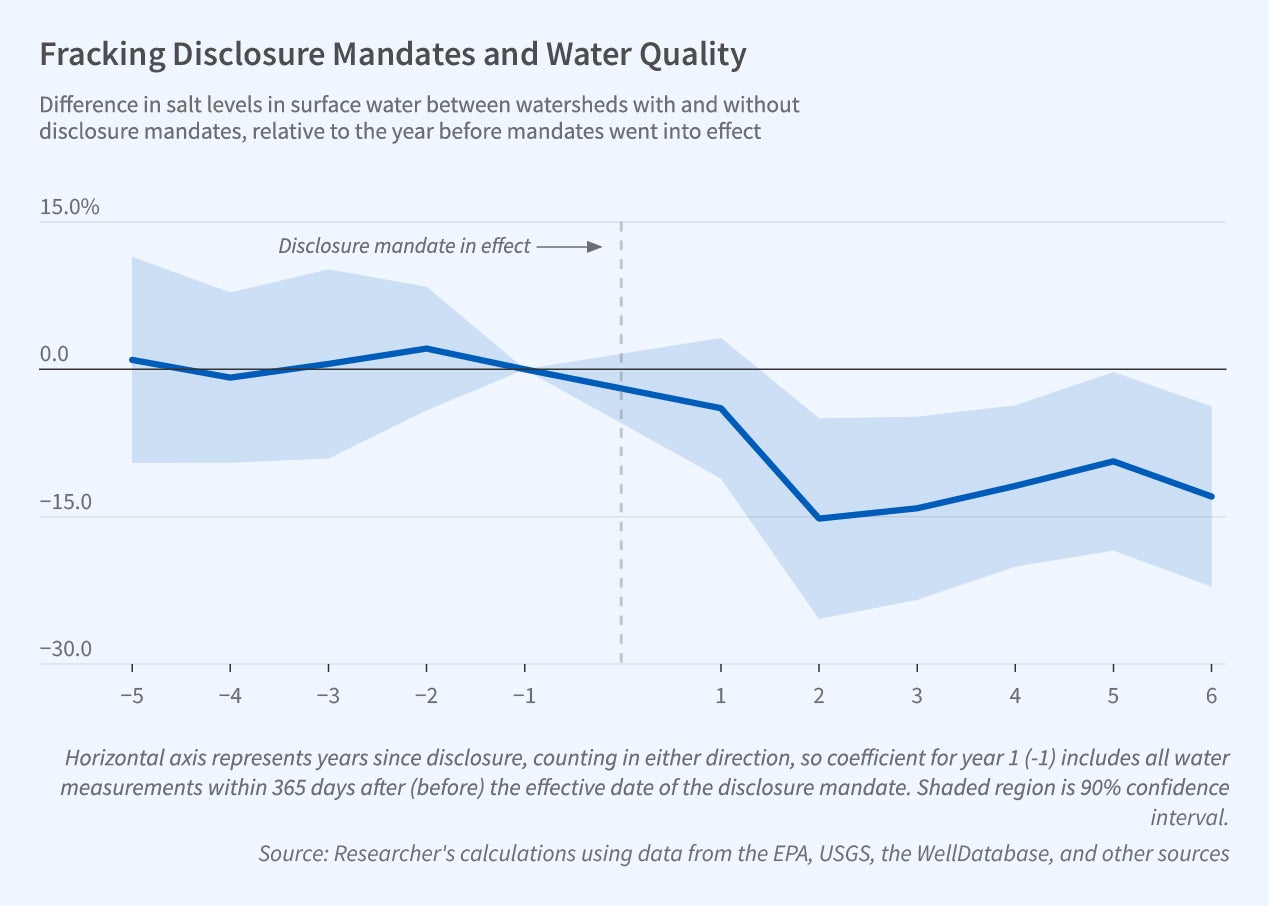Disclosure and Public Pressure Reduce Fracking-Related Pollution

State mandates requiring disclosure of fluid chemicals used by operators led to changes in fracking operations and reduction in pollution levels.
Hydraulic fracturing, commonly referred to as fracking, is a drilling technique that uses highly pressurized fluids to shatter underground rock formations to extract oil and gas. Although fracking has brought many economic benefits, the process has been controversial because of associated environmental and health risks. In an effort to reduce these risks, many states have introduced disclosure mandates for fracking activities, in particular regarding the fluids that are being pumped into the wells.
Disclosure mandates are often introduced to promote corporate accountability and to reduce environmental impacts by enabling affected citizens to push for safer processes. While transparency has become a key policy tool, there is still relatively little evidence on whether and how disclosure mandates can produce change.
A key concern about fracking’s environmental impact is its effect on surface water quality. In Internalizing Externalities: Disclosure Regulation for Hydraulic Fracturing, Drilling Activity, and Water Quality (NBER Working Paper 30842), Pietro Bonetti, Christian Leuz, and Giovanna Michelon track changes in surface water quality around the introduction of state disclosure regulations. They find significant water quality improvements after mandatory disclosure and that these improvements are greater in areas where public pressure and scrutiny are higher.
The researchers analyze 325,351 surface water quality measurements from 2,209 watersheds. A watershed is a homogeneous geologic area that directs surface water into a specific body of water. To track surface water quality changes associated with fracking activity, the researchers analyze four ions considered signatures of fracking: bromide, chloride, barium, and strontium. These ions are found in high concentrations in fracking wastewater and in produced water brought to the surface from fracking wells.
Examining these data in watersheds with and without fracking activity across 16 states between 2006 and 2019, they find that state disclosure requirements are associated with water quality improvements, which also can be traced to changes in fracking operator practices. The researchers find that ion concentrations decline by amounts ranging from 4.4 percent for strontium to 17.8 percent for chloride.
The water quality improvements are specific to ions that can be found in fracking fluids and produced water. The study does not find similar patterns in water quality measures that are not linked to fracking, such as dissolved oxygen, phosphorus, and fecal coliforms. Controlling for other fracking regulations such as drilling standards or wastewater management did not change the findings with respect to disclosure regulation.
Improvements in water quality after the disclosure mandates can be attributed to less water impact per fracking well and to improved operator practices. After the disclosure mandates, operators pollute less per unit of hydrocarbon output. Additionally, operators report using fewer hazardous chemicals after disclosure regulation and also have fewer spills and accidents related to wastewater handling. The researchers find a 5 percent decrease in the number of new wells following the mandates, but this adjustment accounts for only 14 percent of the observed post-disclosure decrease in water pollution. This is consistent with most of the water quality improvements coming from changes in how fracking is done, rather than whether it is done.
Disclosure regulation operates by enhancing stakeholders’ ability to exert public pressure on corporate activities with environmental externalities. Consistent with this notion, water quality improves most in areas where transparency is greater and public pressure is higher. Local areas where environmental nongovernmental organizations have a greater presence experience larger decreases in ion concentrations. Water quality improvements are also greater in counties with more media coverage of fracking in relation to water pollution, and in states in which there are more Google searches for “fracking” after the disclosure mandate. Disclosure mandates have a stronger effect in states where it is more difficult for fracking operators to obtain a trade secret exemption and where fracking disclosure is timelier.
— Kate Pyontek


